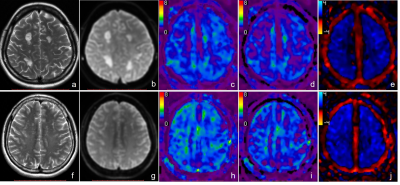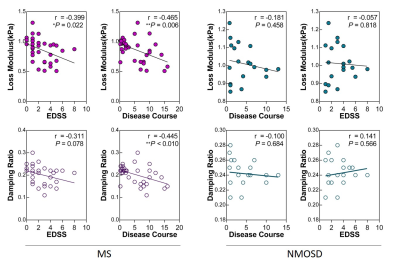Ling Fang1, Matthew C. Murphy2, Qiuxia Luo1, Xiaodong Chen3, Linqi Zhang1, Bingjun He1, Jun Chen2, Jonathan M. Scott2, Meng Yin2, Kevin J. Glaser2, Richard L. Ehman2, Wei Qiu3, and Jin Wang1
1Department of Radiology, The Third Affiliated Hospital of Sun Yat-sen University, Guangzhou, China, 2Department of Radiology, Mayo Clinic, Rochester, MN, United States, 3Department of Neurology, The Third Affiliated Hospital of Sun Yat-sen University, Guangzhou, China
1Department of Radiology, The Third Affiliated Hospital of Sun Yat-sen University, Guangzhou, China, 2Department of Radiology, Mayo Clinic, Rochester, MN, United States, 3Department of Neurology, The Third Affiliated Hospital of Sun Yat-sen University, Guangzhou, China
This
study showed that MRE-measured damping radio and loss modulus stiffness are
biomarkers that show promise for characterizing tissue damage in autoimmune
disease of the central nervous system.

